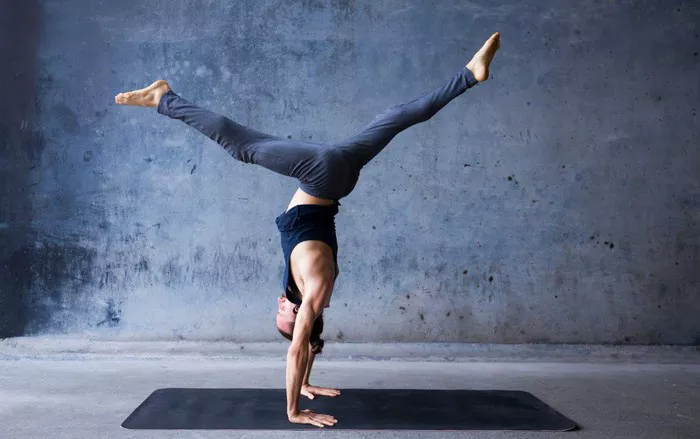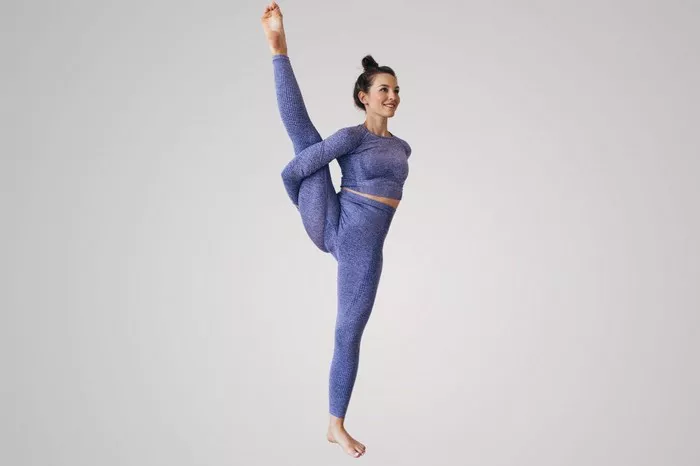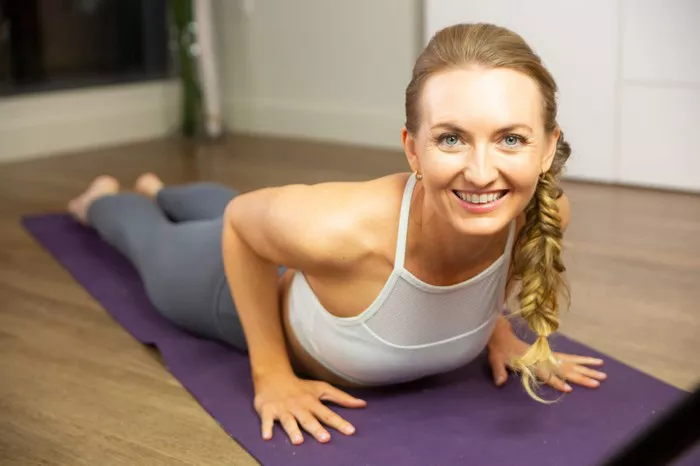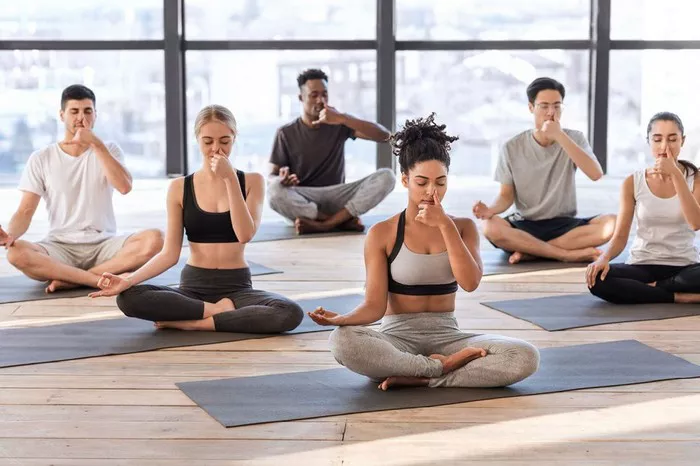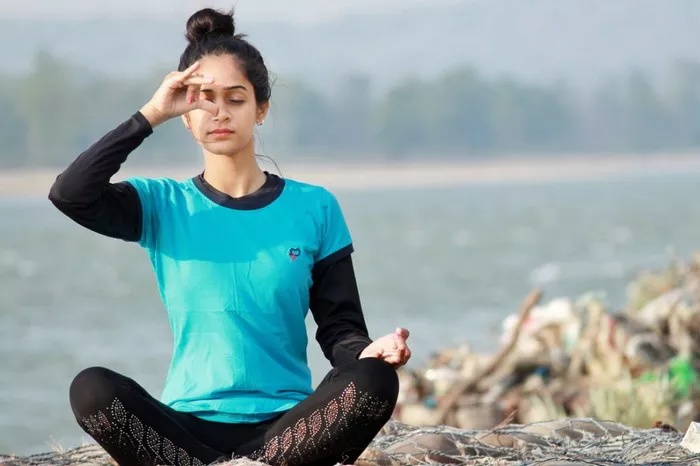The Half Boat Pose, known as Ardha Navasana in Sanskrit, is a foundational yoga posture that engages the core and strengthens both the mind and body. Derived from the full Boat Pose (Paripurna Navasana), this variation is more accessible and widely used in yoga practices ranging from beginner to advanced levels. Practiced regularly, Half Boat Pose cultivates stamina, stability, and inner balance.
This posture involves balancing on the sit bones while keeping the spine straight and the legs lifted at about a 45-degree angle, with the knees bent and shins parallel to the floor. The arms are extended forward, parallel to the legs. It may appear simple, but maintaining this pose requires considerable muscular engagement and concentration.
Understanding the benefits of Half Boat Pose can encourage consistent practice, as it offers numerous physical, mental, and even energetic advantages. Below, we’ll explore these benefits in detail.
1. Core Strengthening
A major benefit of practicing Half Boat Pose is its ability to build and tone the core muscles. These include the rectus abdominis, transverse abdominis, obliques, and the erector spinae.
Key Points:
- Activates deep abdominal muscles: The pose specifically engages the lower abdominals, which are often neglected in traditional exercises.
- Improves spinal stability: By activating the back muscles in coordination with the core, the pose enhances overall spinal support.
- Develops muscular endurance: Holding the pose for extended periods builds stamina in the abdominal region, essential for both yoga and daily activities.
Unlike dynamic movements like crunches, the static hold in Half Boat Pose helps build isometric strength, crucial for maintaining posture and preventing back pain.
2. Enhances Balance and Coordination
Half Boat Pose trains the practitioner to balance the weight of the body on the sit bones, demanding refined control of movement and stability.
Benefits include:
- Improved proprioception: The pose enhances the body’s awareness of position in space, which is important for coordination.
- Strengthened neuromuscular connections: Holding the posture engages multiple muscle groups and fine-tunes communication between the brain and body.
- Boosted athletic performance: Better balance and coordination contribute to enhanced performance in sports and physical activities.
By regularly practicing this pose, practitioners can develop a sense of centeredness and control, which extends beyond the yoga mat.
3. Strengthens the Hip Flexors
The hip flexors, especially the iliopsoas, are heavily engaged during Half Boat Pose. This group of muscles is responsible for lifting the legs and stabilizing the pelvis.
Why this matters:
- Supports lower back health: Strong hip flexors reduce strain on the lumbar spine.
- Improves posture: Proper engagement of these muscles encourages upright posture and reduces slouching.
- Essential for mobility: Functional hip flexors contribute to efficient walking, running, and climbing.
However, it’s crucial to balance hip flexor strength with adequate flexibility to avoid tightness or imbalance. Complementing Half Boat Pose with hip-opening stretches can prevent tension buildup.
4. Tones the Legs and Arms
While the pose is mainly known for its core focus, it also engages the limbs. Keeping the legs lifted and extended recruits the quadriceps, while extending the arms works the deltoids and biceps.
Leg and arm benefits:
- Leg muscles stay active: The tension in the thighs and calves helps define and strengthen the lower body.
- Upper body awareness: Stretching the arms forward while maintaining posture builds shoulder endurance and awareness.
- Improved circulation: Engaging multiple muscle groups stimulates blood flow and lymphatic drainage.
These limb-strengthening qualities make Half Boat Pose a comprehensive, full-body workout, especially when performed consistently.
5. Stimulates Digestive Organs
In yogic tradition, Half Boat Pose is believed to massage the abdominal organs, aiding in digestion and metabolic health. The abdominal compression activates internal functions by increasing intra-abdominal pressure.
Digestive system impact:
- Enhances peristalsis: Gentle compression may help stimulate intestinal movement and improve digestion.
- Activates the pancreas: This can support insulin regulation and sugar metabolism.
- Cleanses the gut: The pose may help relieve bloating and gas by encouraging movement in the digestive tract.
For those suffering from sluggish digestion or mild gastrointestinal discomfort, incorporating Half Boat Pose into a daily routine may offer mild, supportive relief.
6. Improves Focus and Mental Discipline
Holding Half Boat Pose requires not only physical strength but also mental presence. The intensity of the posture draws the mind inward and encourages focused awareness.
Cognitive and emotional benefits:
- Improves concentration: Focusing on breath and alignment trains the mind to stay in the present moment.
- Develops willpower: Maintaining the posture through discomfort cultivates determination and perseverance.
- Reduces stress and anxiety: Focused breathing in the pose can activate the parasympathetic nervous system, promoting relaxation.
Yoga practitioners often note that the mental discipline developed on the mat positively influences other areas of life, from work performance to personal relationships.
7. Builds Endurance and Stamina
As an isometric pose, Half Boat requires sustained effort over time. This builds both muscular and cardiovascular endurance when practiced in longer holds or repeated sets.
How endurance improves:
- Cardiovascular challenge: Holding the pose for 30 seconds or more can raise the heart rate.
- Progressive muscle fatigue: Regular practice delays the onset of fatigue by conditioning the muscles.
- Stamina for other poses: Endurance gained in Half Boat transfers to other challenging yoga postures like Crow or Plank.
This stamina supports not only physical activities but also mental endurance, essential for managing stress and challenges in daily life.
8. Supports Spinal Health and Alignment
Maintaining a straight spine while lifting the legs and arms cultivates awareness of spinal alignment and helps prevent future issues.
Key spinal benefits:
- Prevents slouching: Core activation supports natural spinal curves.
- Encourages neutral alignment: Holding the pose with a tall spine trains good posture habits.
- Reduces back pain: Strengthening spinal support muscles alleviates lower back discomfort.
A healthy spine is essential for mobility, nerve health, and energy flow in yogic traditions. Half Boat Pose serves as a preventive and corrective measure.
9. Adaptable for All Levels
One of the strengths of Half Boat Pose is its adaptability. Whether you’re a beginner or an advanced yogi, the pose can be modified or intensified to suit your needs.
Modifications:
- Bent knees: Reduces pressure on the lower back for beginners.
- Support with hands: Holding the thighs provides assistance for core engagement.
- Wall-assisted variations: Legs up against a wall or use of props can support alignment.
Advanced Variations:
- Twisted Half Boat: Adding rotation engages the obliques.
- Leg lifts: Transitioning between Half and Full Boat builds dynamic strength.
- Weighted practice: Incorporating light hand weights increases resistance.
This versatility makes the pose a staple in many yoga styles, including Hatha, Vinyasa, and Power Yoga.
10. Boosts Confidence and Inner Strength
Beyond the physical realm, Half Boat Pose instills a sense of empowerment and confidence. Overcoming the initial challenge of the pose offers psychological rewards.
Internal shifts include:
- Increased self-esteem: Mastery of difficult poses fosters a sense of achievement.
- Heightened body awareness: Understanding physical limits and strengths leads to greater self-understanding.
- Energetic empowerment: In yogic philosophy, core work activates the Manipura Chakra, associated with personal power.
Consistent engagement with the pose can lead to transformative growth, both physically and mentally.
Tips for Safe and Effective Practice
To maximize benefits and avoid strain or injury, it’s important to approach Half Boat Pose with mindful attention.
Do:
- Warm up with gentle stretches, especially for the hips and back.
- Engage the core before lifting the legs.
- Keep the spine straight and shoulders relaxed.
Don’t:
- Overarch the lower back.
- Hold your breath—steady breathing supports the pose.
- Force the legs higher than flexibility allows.
Consistency and patience are key. Small improvements add up, and the body adapts over time.
Conclusion
Half Boat Pose is more than a core-strengthening exercise. It is a powerful tool for cultivating balance, focus, stamina, and resilience—both on the mat and in life. Its layered benefits make it suitable for yogis at any level of experience. Whether your goal is physical fitness, better posture, digestive support, or enhanced mental clarity, incorporating Ardha Navasana into your regular practice can be a simple yet effective way to achieve holistic wellness.
Approach the pose with mindfulness, adjust it to suit your current capabilities, and observe how this seemingly modest posture transforms your strength from the inside out.
Related Topics:


